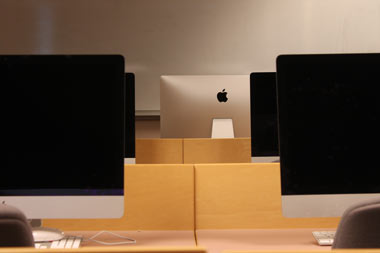Introduction
In the spring 2012 semester, I composed a brief but important proposal for a newly configured computer lab space, submitting it to my Liberal Arts area director and to the campus vice chancellor. The proposal was the result of spending nearly three years evaluating the various institutional, financial, pedagogical, programmatic, and other constraints that influenced decisions regarding instructional lab space at my institution.
In this chapter, I describe the processes and challenges involved in articulating solutions that attend to such constraints while also making the best use of physical spaces. Although institutional and financial constraints often limit pedagogical and programmatic possibilities, physical spaces are often neglected entirely. Douglas Walls, Scott Schopieray, and Dànielle Nicole DeVoss (2009) noted in their evaluation of space as interfaces that, “unfortunately, because spaces are long-standing artifacts, many of the space-related challenges we faced as teachers 20 years ago are the same challenges we face today. Although technologies are dynamic and our pedagogies are flexible, the institutional spaces within which we teach are often much more rigid” (274). Such is certainly the case at my institution, prompting me to submit the lab proposal.
My purpose in sharing the proposal for a computer lab is two-fold: I want to contribute to the existing and growing body of scholarship attending to issues of space, place, and pedagogy in instructional settings. Additionally, I hope to spark conversations among educators, instructional space designers, and program directors/administrators that help us to articulate more specific arguments and justifications for funding and space requests at our various institutions. Through the research conducted to make the proposal, and the proposal process itself, the most important lessons learned include: (a) never give up, (b) work-arounds and compromises can be improvements, and (c) long-term strategies may have more appeal for the upper administrators making financial decisions and space allocations.
To understand the various contexts affecting the instructional technology spaces on my campus, I provide here an annotated version of my proposal in which I describe deliberate, infrastructural practices of redesigning, appropriating, and transforming existing spaces to address programmatic needs for lab updates, while still pragmatically attending to the severe budget and space constraints of our branch campus of Washington State University.
